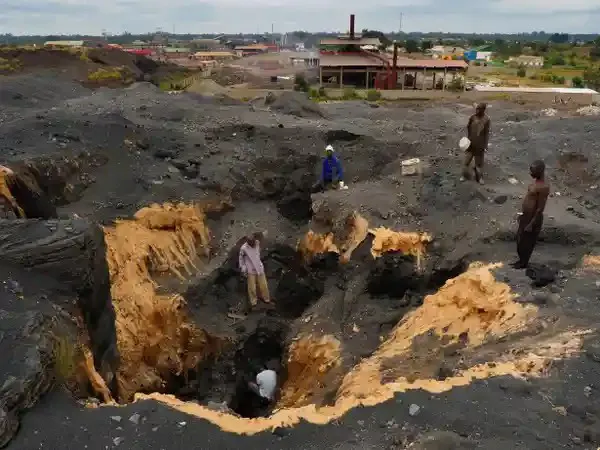1902, large quantities of lead are discovered in the vicinity of Kabwe. This Zambian city, which today has more than 250,000 inhabitants, was at the time part of the British colony, and the authorities of the time immediately began the intensive exploitation of the deposits, without questioning the consequences for the future. In the following years, the extraction of lead intensified. The mine remained active until 1994, the year in which the activities officially ceased because they were considered uneconomical, but the people with their bare hands continued and continued to dig.
After it's closure in 1994, the mine began releasing dangerous lead particles onto the ground that soon reached population centers. What is somewhat perplexing is the lack of a more than desirable reclamation work after the closure of the center, a measure that would certainly have avoided what is happening today.
Today Kabwe boasts the record of toxicity in the entire planet: twenty kilometers from the inhabited center the water is still undrinkable due to the very high presence of metals, but the most tragic aspect of the excessive concentration of lead in the air, in the subsoil, everywhere,it has undermined the future of generations.
In 2011, a survey carried out by the World Bank revealed how much too little had been done in Kabwe to protect the population. The same study pointed out that, just to give us an idea of the absurdity of the situation, the lead concentrate in the soil was at least ten times higher than US safe levels. The reason is simple to identify: when the mine was in operation there were no regulations governing emissions.
Lead poisoning is devastating for the neurological development of children and it seems that the cases examined in the city show dangerously high levels of the metal in the blood. In some areas even twenty times higher than the tolerable limit.
In late 2020,a group of Zambian women and children filed a lawsuit against a subsidiary of the Anglo American mining company for allegedly mass lead poisoning. According to the indictment, more than 100,000 people may have been poisoned by years of exposure to toxic elements from a mine in the Kabwe district. Anglo American South Africa (Aasa) owned the mine from 1925 to 1974. Aasa announced that it will respond in court to the allegations but also claimed that, although it was aware of reports on the cause, he never received official complaints.
References:
